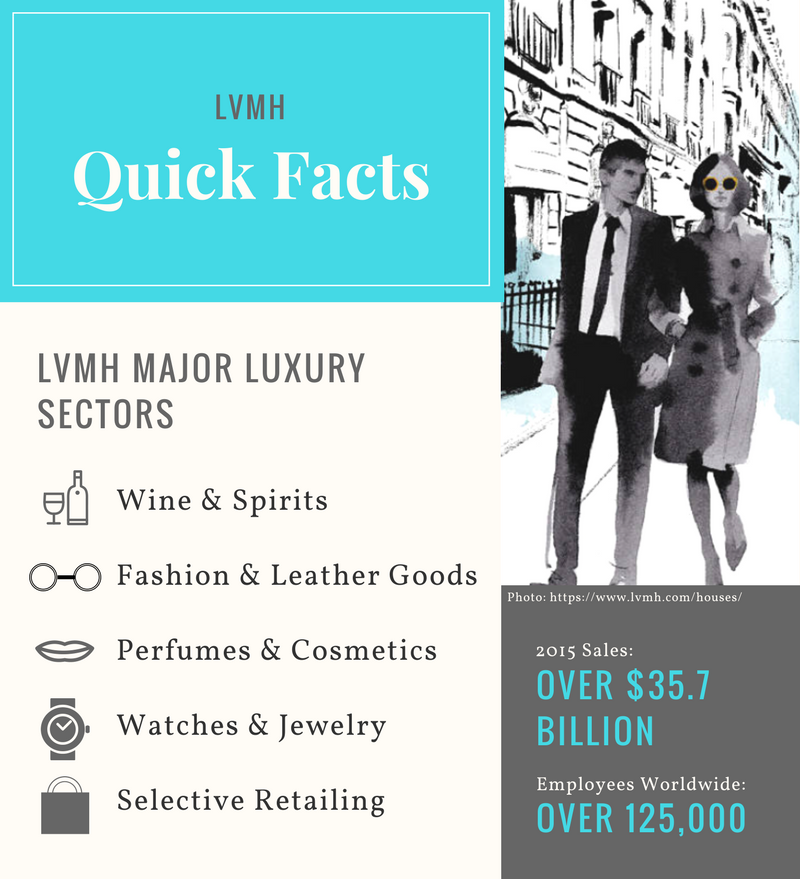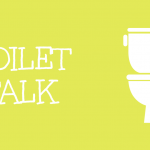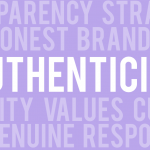LVMH is an international conglomerate that produces luxury goods through 70 brands that they call “Houses”. From Dom Pérignon and Givenchy, to Sephora and De Beers Diamond Jewellers, the group has a presence in all the major sectors of the luxury market. Recently, LVMH has begun to publicize its efforts to become more sustainable.
LVMH’s new LIFE framework (LVMH Initiatives for the Environment) requires that each brand’s strategic plan consider the full life cycle of products, create five-year targets, and create strategies to achieve them. One initiative included a $5.8 million internal carbon fund, where each House would contribute as per their emissions to fund ongoing emissions reduction initiatives or research. Another was creating deeply engaged relationships with suppliers, ensuring that they were equipped with best modern practices and thoroughly tracking inputs that may have potentially damaging production practices involved (e.g. diamonds).
One thing that stood out was how LVMH believed that customers now care more about sustainability, and that they’re competing with other “sustainable” luxury powerhouses such as Kering. As sustainability becomes more mainstream, it’s becoming more important for image-focused luxury consumers to ensure that their purchases are sustainable. In Ottman’s terminology, this means the “drifter” segment of the luxury market that previously were not that concerned about the environment is becoming more concerned about associating their image with sustainability.
LVMH has also begun to support the use of the “Butterfly Mark” that helps customers identify luxury brands committed to sustainability. Similar to the way Jason Clay worked with brands to preserve biodiversity, LVMH has the power as an industry leader to pressure other players in the market to follow suit.
Though they have a long way to go, it’s great that LVMH is using their sustainability initiatives to create shared value. However, it raises the question if luxury goods could ever be considered truly sustainable. Luxury goods are generally not considered needs, and increased consumption uses more resources. Some may argue that a more sustainable lifestyle would mean eliminating luxury goods completely. LVMH’s sustainability claims may lead to worsening public perception because of the way the company looks to benefit from sustainability. Despite this, I think that “unnecessary” wants will never disappear, and it’s not feasible to dismantle such a huge industry. The industry is moving towards tying together sustainability and luxury so that sustainability is seen as part of a luxurious life, and I think it’s a great start.
Sources:







Kimberly Wong
January 26, 2017 — 1:16 pm
I think it’s really interesting to see luxury brands who essentially rely on overconsumption, to adopt sustainable programs. I suppose with the changing views of their market, it was inevitable. One thing I’m curious about, though, is what their definition of sustainability is – whether it incorporates the social aspect as well as the environmental. Especially when it comes to industries like diamond mining, I feel like this is something that people would be waiting for them to tackle next.
victoriayang
January 29, 2017 — 11:11 am
Good point! LVMH does actually have other commitments to social & economic responsibility, such as a program for disabled employees, promoting workplace gender equality, and investing in supplier communities. But when it comes to diamonds – one of their brands, De Beers Diamond Jewellers, was one of the first to try to sell “ethical” diamonds, but the Kimberley Process for certification is still controversial and it’s definitely something they can work to improve.
aaronlattimer
January 27, 2017 — 7:21 pm
I agree with you Kimberly. It is an unique practice that can often be scrutinized by the public, as companies that rely so heavily on consumption are immediately presented in the public eye with a negative facade. Unfortunately, while the company tries to correct as much of the supply chain efforts to ensure a secure and sustainable triple bottom line, often they are unable to cover or guarantee each attribute. This is a downfall of where the media and social communication rule over public perception of brand imaging, even through extensive efforts to practice sustainability.
victoriayang
January 29, 2017 — 11:18 am
That’s true, and it’s definitely a marketing challenge create the best strategy about communicating sustainability commitments (like the lean, defensive, shaded, or extreme green strategies we discussed in class). However, it’s hard to figure out when companies are truly doing everything they can or only partially committing to greenwash their products. In this case, I think LVMH is off to a good start, but definitely could and should do more and have a huge impact because of it’s global presence.
MariaHernandezCole
February 5, 2017 — 9:43 pm
Hello Victoria, thank you for your post about luxury brands! I am extremely interested on this topic. I have never heard of the butterfly mark and will take into consideration for future purchases. I do support your opinion that luxury brands will never truly be completely sustainable. But doing something is better than nothing. Relating to your other post, do you believe that luxury brands could apply the circular value chain into their core business? Sometimes the industry can limit the level of sustainability. Mainly because it can decrease the perception of uniqueness and quality of a brand. Keep the good work! -Maria
victoriayang
March 9, 2017 — 5:22 pm
I think that luxury brands can incorporate elements of the circular value chain into their manufacturing and post-use processes but I don’t think luxury will ever truly embody a circular economy. Luxury brands rely too heavily on high quality, difficult to obtain virgin materials and unique craftsmanship to sell their products. The only way I can imagine it happening is if we changed our entire cultural approach to consumption. The meaning of luxury would need to change for these image-drive markets, where not consuming sustainably is really looked down upon. Then you would need to give them an alternative way for these markets to show off their exclusivity – perhaps shifting from materials to exclusive experiences, or equating high end products with net positive impact. I don’t know if that’s possible in reality, but I appreciate that LVMH is taking those first steps!
Rachel Li
February 27, 2017 — 5:35 pm
Luxury goods and sustainability is definitely an interesting topic because it goes back to the question about whether or not we can decouple and dematerialize the economy we’re in. That’s hard to do. Where Caterpillar is a good case of remanufacturing towards a circular economy, I don’t think that would be as easily applied to luxury goods which boasts craftsmanship and scarcity. Although I don’t see old leather bags get made into new ones, I can see maybe taking old leather turning into traveller’s bag or luggages.
victoriayang
March 9, 2017 — 4:56 pm
It’s definitely a good question – I don’t know if we’ll ever be able to completely dematerialize the economy, and the luxury industry with it’s attitude of conspicuous consumption is a big part of that. LVMH has mostly focused on making their production more sustainable, with high quality, long lasting designs. If they wanted to move more towards a circular economy, I agree they would need to do a lot more work to create post-use processes that could recycle or reuse materials. I really liked your idea of downcycling leather bags – there’s a lot of DIY possibilities for reusing leather, and recycled leather can be used for upholstery or interior design: http://www.formica.com/en/us/sustainability/recycled-content
rachel01tb
April 10, 2017 — 9:36 am
Hi Victoria! Thanks for your post. In my Consumer Behavior class, we had a guest speaker who worked in luxury PR, retail, and now is the Vancouver store director for Saint Laurent. I believe (?) he used to work for LVMH as well, and he spoke to much of what you discussed in your post. I think another aspect of sustainability in this industry is the consignment/resale/vintage market. I argue that luxury goods are more sustainable than fast fashion or middle tier apparel because of their quality and timelessness (arguably that’s changing rapidly). Reselling these goods when the original owner no longer wants it is a great way to continue to lifecycle of the product. The quality is likely upheld better than, say, a Forever 21 t-shirt, and is actually of some value to the next user.